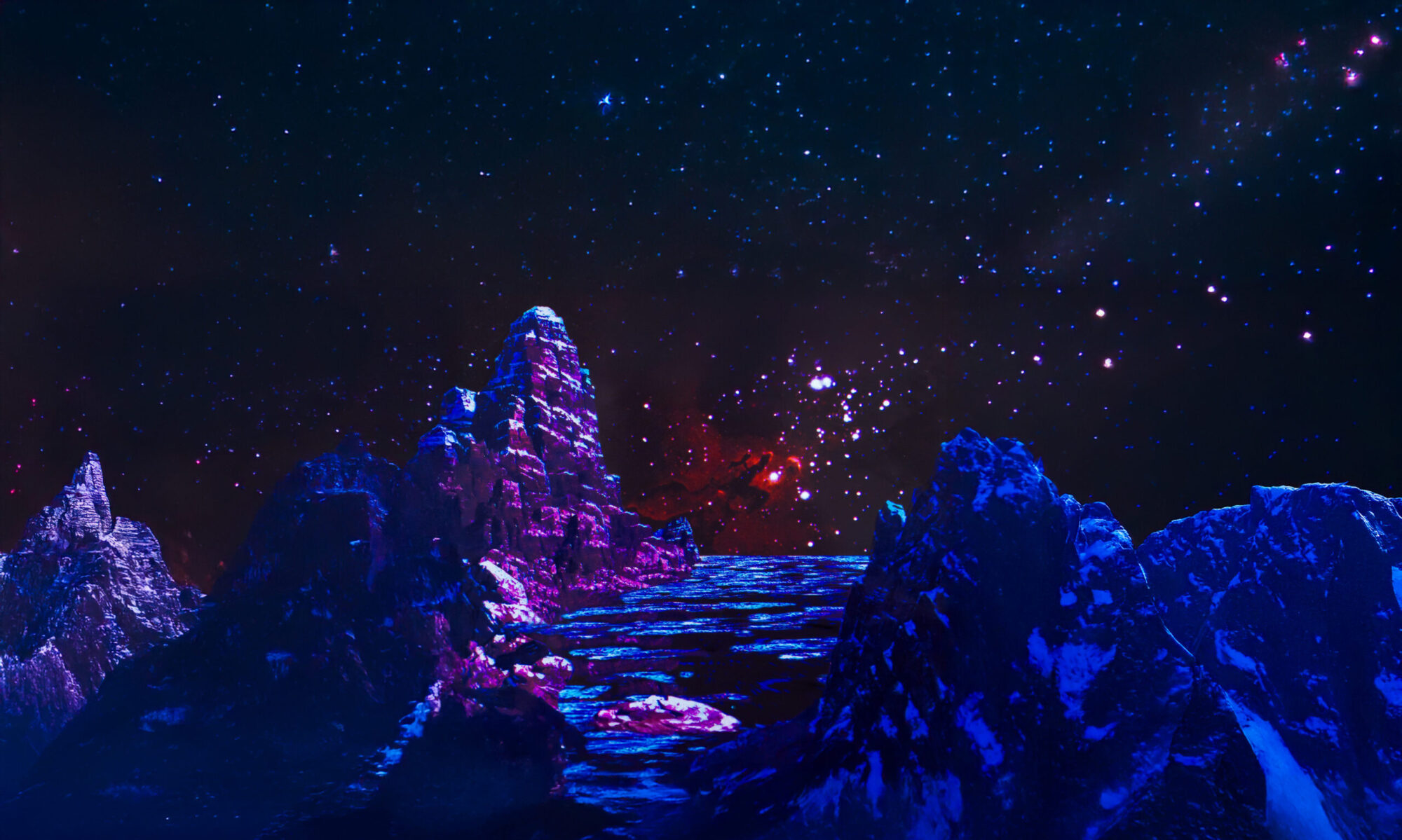Like all bands and albums, they often hold a captivating backstory, and the album In Truth We Trust is no exception.
Let’s step back to the early ’80s, a time when Ray Alex’s journey commenced with NEPTUNE, a band known for its ever-evolving lineups. Among its members were luminaries such as Björn Melander (Gotham City) and Jan Granvik (Glory) for a short period. When Jan Granvik moved on, Anders Olsson stepped into the fold, remaining until Neptune’s final chord rang out in 1987. Ray Alex, undeterred, found his musical home with Jan Granvik’s new venture, Glory. Here, he lent his talents to early demos, including Glory’s first single (In Hurt) who originally was one of Neptune’s last written songs before they disbanded, of course reworked to suit Glory better.
Post-Glory, Ray Alex embarked on a new chapter, this time as the voice of West End. During the recording of their first single, a creative spark ignited within him, leading to the birth of “Love is a Stranger” in less than 24 hours, Ray and his former bandmate, Anders Olsson, sculpted a tune that would eventually find its rightful place on the album “In Truth We Trust.” Their deep musical connection and shared love for AOR music made their collaboration effortless, resonating with the heart of every note.
After NEPTUNE’s disbanded, Anders Olsson started the band UNICORN, where the advice to enlist Jan Anderson (later known as Tosh Ason) resonated profoundly. Tosh recently came from the band “Line Out” where he played the drums. The band had achieved success during their time touring around the Nordic region. It’s worth mentioning that Line Out had a keyboard player named Johan Rosth, who, after the band disbanded, went on to play with, among others, the band Its Alive. Almost three decades later, the individuals reunited under the same umbrella called Neptune.

Together, they cultivated their unique musical synergy and set up their own studio. Beyond their original compositions, they lent their magic to other bands, such as Unanimated, crafting sonic landscapes like “Fire Storm” (90-91) and “In the Forest of the Dreaming Dead” (93) which is musically far away from their backyard so to say. Anders recalls a moment from when they were recording the drums: Jan exclaimed, “The kick drum sounds like a tumble dryer full of coins, and laughed out load.
The recording session with West End spanned less than a day ignited a fervor in Ray and Anders, inspiring the birth of JAR. The name, originally intended as J.A.R., symbolizing their initials, saw the dots gracefully fade into history.

With their very own studio in tow, Jan and Anders were armed with boundless creative opportunities. Notably, as the “In Truth We Trust” sessions unfurled, they embraced cutting-edge technology for the time. The era marked the dawn of modern recording, with the fusion of hard disk recording and traditional tape machines. As tech enthusiasts, Anders and Tosh readily embraced this wave of innovation.
Their creative arsenal expanded further, thanks to Anders’ tenure at a prominent music store in town, which provided them access to an array of synthesizers and effects. Anders and Tosh decided to secure a bank loan to invest in all-new equipment. On the day their new tape recorder arrived at the music store, another well-known guitarist happened to be in town and walked into the same music store. He expressed interest in building a writing studio for his upcoming album. In an unexpected turn of events, the store owner ended up trying to sell the tape recorder meant for the guys to the other guitarist, who happened to be a tough-looking individual sporting a black leather coat. Fortunately, the store manager promptly arranged for another tape recorder from the distributor, and it was delivered by cab just a few hours later. One recorder went to Tosh and Anders, while the other guitarist signed his paperwork with none other than Yngwie J. Malmsteen.

Their creative journey welcomed a new collaborator, Mike Lind, who shared their passion for technology and coffee. His role as an assistant engineer allowed the trio to focus on the music. An amusing anecdote from that time involved the surprise sale of their KORG Wave station behind the guys back, he replaced it with a KORG T3, an incident that unfolded during JAR’s recording, unknowingly altering the sonic landscape they had been crafting.
In the album’s closing chapters, a dear friend of Ray Alex, Lars Ericson (Le Ericson), was invited to embellish the canvas with what they affectionately referred to as ‘stunts,’ adding intricate solo guitar passages to tracks such as Hold On, Love is a Stranger, Cowboy, and Hold You in My Arms, enriching the tapestry even further.

“In Truth We Trust” was birthed in 1993, released on the medium of its time, the cassette. As the ’90s waned, the album made a digital resurgence, making waves on MP3.com and garnering well-deserved recognition. During that era, it was possible to place an order for your personalized CD directly from MP3.com, and a few of these have been circulating ever since.
Fast forward many years to the latter part of 2017, when a record label reached out, eager to rekindle the magic of NEPTUNE’s vintage recordings. The collaboration between Ray and Anders was reignited, and it wasn’t long before Tosh rejoined the musical journey.
With NEPTUNE’s historic demos from the ’80s freshly revisited, the future shimmered with the possibility of a sequel. Discussions even swirled about reimagining “In Truth We Trust,” harnessing the wisdom and technology accrued along the way. Tragically, Ray Alex was not destined to witness this new chapter, as he departed this world following a severe stroke in early 2019.
Ray Alex, a remarkable blend of John Lawton and Elvis Presley, left his indelible mark on this album, his voice resonating through every expressive note and soulful vibrato.

